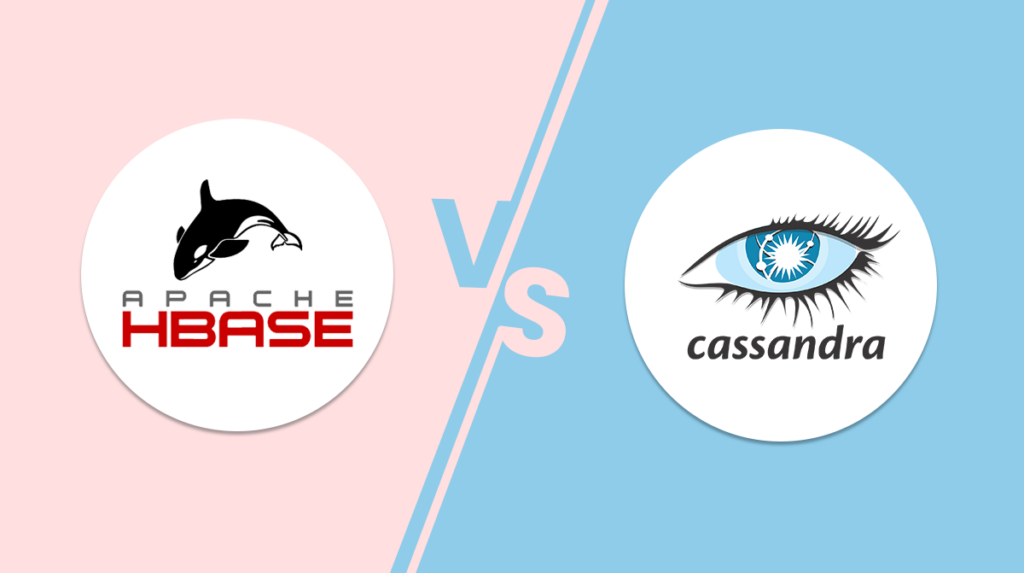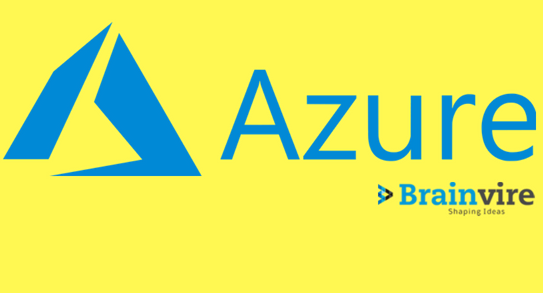The database has comprehensive access control over the transactional data in companies. In simple words, you can define a Database as organized information collected in a computer system.
Over the years, experts have encouraged the well-defined procedure of the Data Management System (DBMS) for decreasing data redundancy and efficiently storing data.
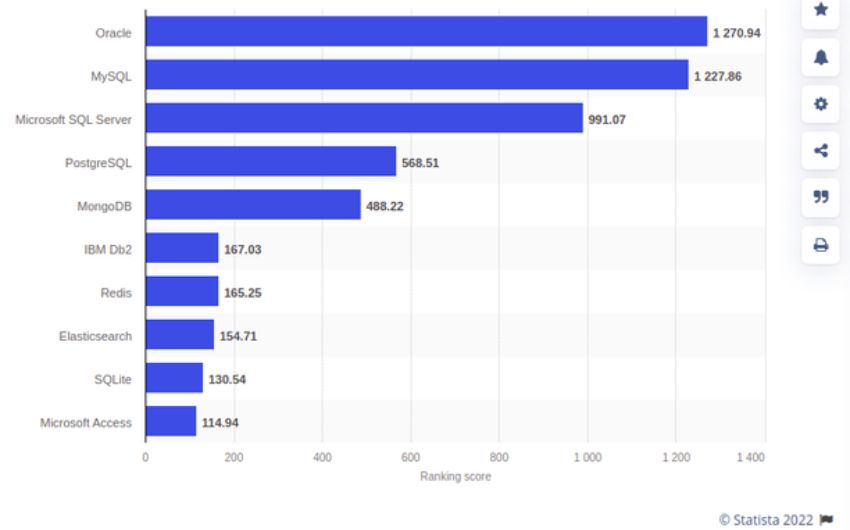
DBMS is a platform for developers to organize, update and control extensive databases.
As the digital world is pivoting more towards big data and data analytics, the knowledge regarding SQL coding language has become an essential integral part of the management system for developers all across the globe. Among various database management skills, the ones that stand out are Cassandra, HBase, MongoDB, and Couchbase.
While determining the database and analytics software, developers need to be more considerate as it is one of the factors that sculpt the success of your enterprise.
However, it is the crux of the matter that many developers struggle to comprehend the provoking issues owned by the various graph software vendors. As a result, they often lead to falsified information, misleading you to pick the wrong one.
There are times when the DBMS itself be either commercial or integrated with exceptional features. Therefore, the best way to guarantee a productive, streamlined app development process and a suitable definitive result are to determine the best NoSQL database management system.
As we can see in the below, depict graph that NoSQL is rising with time, and soon, we can see more beneficial aspects of NoSQL.
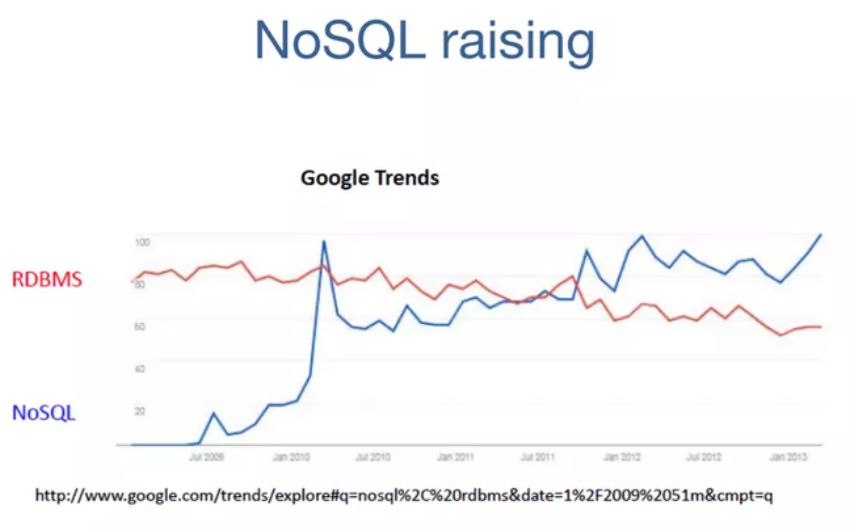
That said, let’s deep dive into these two renowned Open-source NoSQL systems and understand which is the most promising one: HBase vs. Cassandra.
Apache Cassandra and Apache HBase are the two halves of a whole with the same outer structure and diverse characteristics. Therefore, you might mistake them as similar technologies from the outside, but getting closer, you will understand how different both of them can be from each other.
These NoSQL data management technologies have many similarities, and for example, they are NoSQL wide-column stores; however, dismounting from BigTable, Cassandra, and HBase do vary.
For example, HBase is not the one with query language, which means you need to work with a JRuby-based HBase shell and implicate different technologies such as Apache Hive, Apache Drill, or others. On the other hand, Cassandra has its CQL (Cassandra Query Language), benefiting Cassandra specialists in various ways.
What Is A NoSQL Database?
As we discussed before, most companies are working on big data structures, increasing the significance of data management with NoSQL. It is known as “Not Only SQL,” which means NoSQL databases support SQL-like QL and have their features.
The NoSQL market reached $2,410.5 million in 2018 and anticipates surpassing $22,087 million by 2026, increasing at a CAGR of 31.4% from 2019 to 2026.
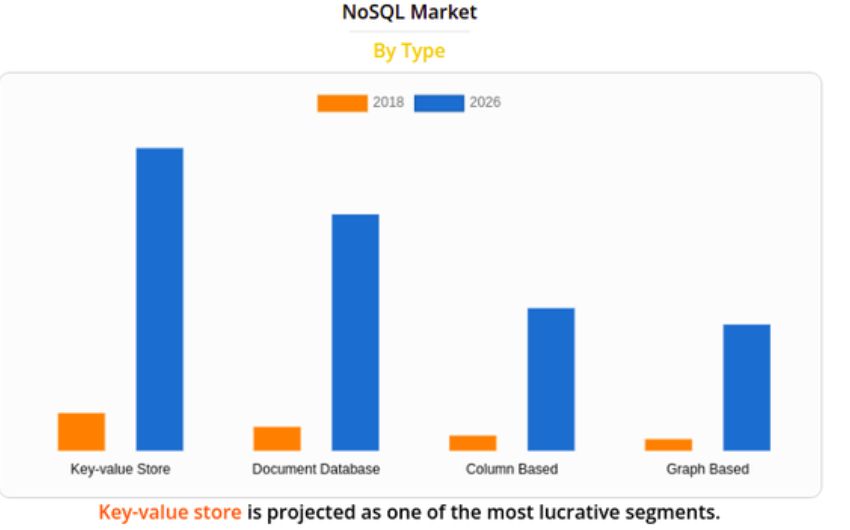
Broadcasted data stores globally choose NoSQL with massive data storage requirements as the databases are assorted.
NoSQL databases are better scalable and deliver more promising performance than relational databases. NoSQL can accomplish more compared to a relational database. It can run on a high digit of nodes as its scale-out architecture.
Features of NoSQL Database
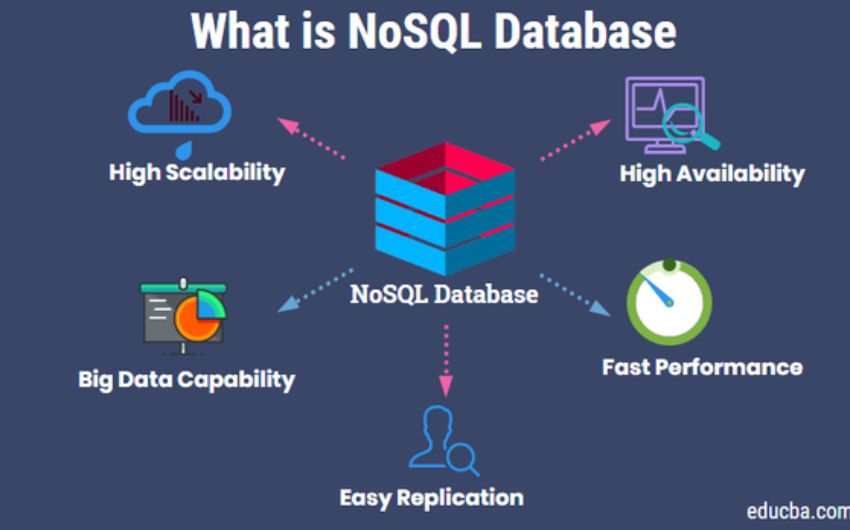
NoSQL has a non-locking concurrence management tool that permits real-time reads not to contradict writes. It sustains data distribution across several devices and does not adhere to a particular schema.
NoSQL can additionally categorize into a broad spectrum of other technologies. Though, the alternatives bring disarray. Well, to evade the dilemma, let’s analogize the globally used NoSQL database- Cassandra and Hbase for you.
What is HBase?
HBase is an open-source, comprehensive column store circulated database established on Google’s Bigtable. Development of it started in 2008 as part of Apache’s Hadoop Distributed File System. Constructed on top of HDFS, it leverages various features from Bigtable, such as in-memory operation, compression, and BF.
Developed based on Java, HBase delivers authorization for external APIs such as Thrift, Avro, Scala, Jython, and REST. In addition, Hbase presents a stand-alone lid of its database, though that is mainly utilized for development design, not in production systems.
Let’s dive into the Architecture of HBase to comprehend the technology in a better manner.
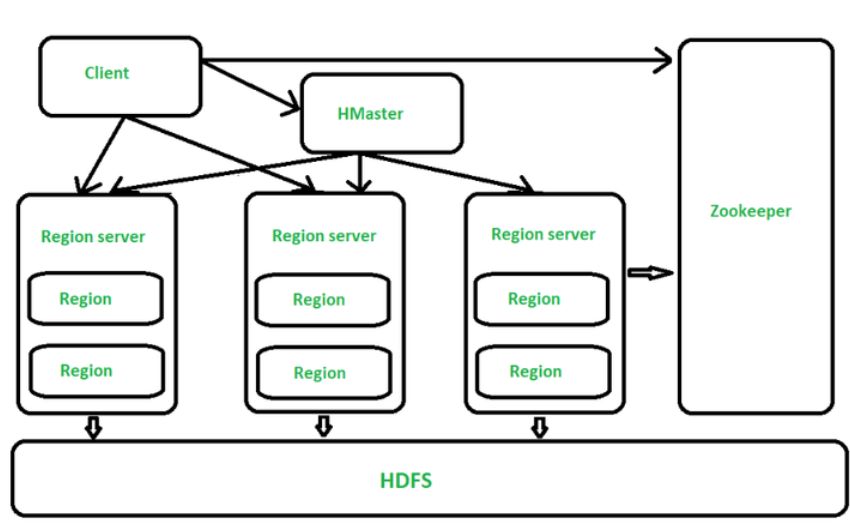
HBase also delivers a freestanding type of database, which assists in multiple development configurations.
Primary Key Features and Benefits of the Hbase database:
- It functions with a written instructed database and data stored as crucial or significant.
- Hbase is excellently fitted for range-based scans and delivers seamless scalability.
- Hbase sustains Bigtable, Bloom filters, and block caches that significantly optimize the queries.
- Hbase contains tables; however, tables require a schema, not columns.
- Hbase is in a customized language that requires understanding for executing queries.
HBase Drawbacks:
- HBase is moderately identical to Cassandra but has distinct architectures.
- Hbase functions on a standard master-slave architecture and bears a lot of time while yielding from one HMaster to another. This outcome is a single-point collapse.
- Since Hbase is without a query language, thus the need to use the JRuby-based Hbase shell is essential for the capabilities of SQL.
- HDFS is the base of HBase, and its hardware necessities are excessively elevated.
What is Cassandra?
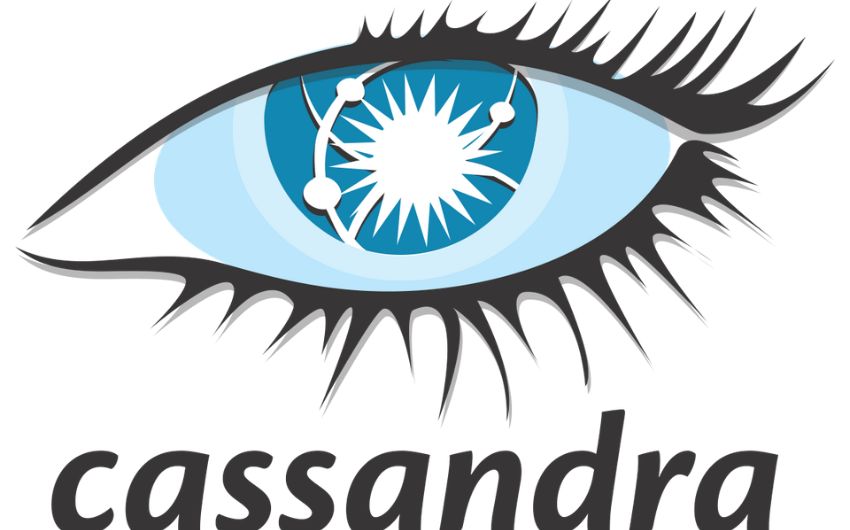
Cassandra is one of the famous comprehensive column-store database systems among developers. Created at Facebook for its Inbox Search segment, Cassandra was open-sourced in 2008 and assembled a top-level task for Apache on February 17, 2010.
Its business features, such as scalability and high availability, let it control significant data portions and deliver almost real-time research. Registered in Java, Cassandra presents synchronous and asynchronous replication. In addition, its durability and fault-tolerant abilities make it perfect for always-on apps.
Let’s dive into the Architecture of Cassandra to comprehend the technology in a better manner.
The decentralized structure of Cassandra lets any node react to demands, thus allowing it to bypass single node failure.
Primary Key Features and Benefits of the Apache Cassandra are:
- Apache operates with a broad column store.
- Cassandra enacts quick reads and writes.
- No numerous secondary indexes are necessary for Apache Cassandra.
Apache Cassandra’s Drawbacks:
- After the architecture circulation, replicas become unstable.
- While the primary key is hidden, the scanning day becomes problematic.
- In addition, Cassandra’s accumulation needs clients’ approval.
Thus to determine which one is best, let’s explore them by comparing their similarities and differences.
The Similarities of HBase and Cassandra
Database
HBase and Cassandra are widely known as NoSQL open-source databases. Both can manage extensive data collections and non-relational Info, which contains images, written data, audio, and videos.
Scalability
HBase and Cassandra both have an elevated linear scalability component. Beneath the feature, people who like to abide more data are only required to expand the nodes digit in the collection. This assembles them both excellent options for managing massive data structures.
Replication
HBase and Cassandra, both are security control data failure after it falls, is achieved through the method of replication. The details are written on one node conveys repeated on several nodes in a set. Therefore, a repetitious node is consistently present for acquiring data if a node fails.
Coding
These databases are column-oriented; they both execute identical write approaches. Besides, columns are mostly the interior storage crew in the database. Therefore, users can count columns as per their needs. Also, the right direction begins with logging a write function to enter a file. The process is essentially accomplished for providing durability.
Currently, we have examined what completes them similarly; let us divert our concentration to the distinction of HBase and Cassandra.
HBase vs. Cassandra: Differences Of These Two NoSQL Databases
Now that we have been through the similarities, let’s discuss some differences between HBase and Cassandra.
Infrastructure
HBase uses Hadoop Infrastructure. This HBase- infrastructure contains different moving elements such as Zookeeper, HBase master, Data nodes, and Name Node.
Cassandra has a diverse infrastructure and process than Hadoop. Nevertheless, for multiple applications, Cassandra utilizes different DBMS and their infrastructure.
Numerous Cassandra applications or timetables operate Cassandra, Storm, and Hadoop. Its infrastructure is established on a single node-type structure. In this, all the nodes function correspondingly. When employed alone, nodes are entirely operated as a coordinator.
Support
HBase is not in support of the requested partitioning.
Whereas Cassandra supports ordered partitioning, this requested partition guides to create row proportions in Cassandra up to 10’s of MB. Using collected partitioning builds hot zones for the users.
HBase delivers a coprocessor capacity. This ability sustains triggers. In HBase, a single row is conformed by precisely one region server at the moment. Therefore, it does not support read load offsetting against a single row. HBase backs range-based scans as well.
While sustaining multiple things, Cassandra doesn’t keep occasional things. For example, Cassandra determines in supporting range-based row scans. Also, Cassandra does not endorse coprocessor-like functionality.
Performance
The comparison of Apache Cassandra and Apache HBase’s performance is based on reading and writing capability.
Write: HBase and Cassandra are both on-server write courses somewhat correspondingly. However, a few distinctions make Cassandra a more attractive option, like the distinction in terms of the data structure. Also, HBase doesn’t register to log, and it is noted that it cache simultaneously.
Read: First, you scrutinize uniform and quick reads; HBase is the one. Moreover, it is known for writing on one server. Also, you don’t have to compare the different versions of nodes.
Nodes
In Cassandra, a user needs to recognize some nodes as source nodes. These nodes function as junctures for inter-cluster touch. Whereas in HBase, there are master nodes. These nodes observe and harmonize the activities of region servers.
Therefore, increased scalability and availability in Cassandra are guaranteed by permitting numerous source nodes in a set. Also, it secures the exact by standby nodes in HBase. When the primary master node fails, the standby node is willing to accept its position.
Internode Communication
Cassandra and HBase have internode communication. However, Cassandra utilizes Gossip Protocol to transfer the data from one node to another. In other simple words, it replicates the data.
On the other hand, HBase depends on Zookeeper Protocol. Therefore, one node functions as the superior that provides data to other nodes.
Transactions
Cassandra has an element of lightweight trades. The tools utilized in the marketing are ‘Compare and Set’ and ‘Row-level Write Isolation.’
Wherein HBase has two mechanisms for these trades. One is ‘Check and Put,’ and the other is the ‘Read-Check-Delete’ tool.
Query Language
HBase and Cassandra are both established on JRuby Shell. In addition, though, Cassandra has a distinctive Query Language, CQL. CQL has taken after SQL.
Suppose corresponding CQL is far more prosperous according to features and operations than HBase. Hence, CQL is the preceding programming language for Cassandra.
Documentation
Cassandra’s documentation is more profitable than HBase. Documentation is why working and learning Cassandra is more effortless than HBase. Besides, establishing Cassandra Cluster is also more manageable than HBase Cluster.
Miscellaneous
HBase utilizes bloom filters as a state of indexing. Even across a WAN, it delivers asynchronous sets replication as the storage department.
On the other hand, Cassandra utilizes the bloom filters for critical lookup. Over the WAN, Cassandra’s automatic partitioning supplies row replication for a single row.
Hbase Vs. Cassandra: Which Is Better Of The Two NoSQL Databases?
Most social networking platforms would choose HBase as it is available on another side of the banking sector. However, selecting Cassandra over HBase would be best to look for protection for every transaction.
Cassandra Key aspects include High Availability, Minimal management, and No SPOF (Single Point of Failure); on the other hand, HBase is suitable for more rapid reading and writing data with linear scalability.
Companies such as Verizon, Bloomberg, and others utilize HBase vs. Cassandra; big social networking platforms such as Twitter, Facebook, etc., use both.
Thus, we can’t say which one is excellent; HBase and Cassandra both have benefits and drawbacks. The only way you can decide is to determine which one is more suitable for your project requirements and the production environment.
Related Articles
-
Why Azure & Dot Net Are Technologies Of The Future
Talking About Why Azure & Dot Net Are Technologies Of The Future, Azure and Dot Net are considered the technologies of the future. What exactly are the specific features and
-
Benefits of Running Multiple Brands on One Odoo Solution
Many startup founders infer that at one point, they need new ventures. They start thinking of new business ideas. However, building different businesses under one roof is common these days.
-
5 Reasons Why Nonprofits Should Use SharePoint
Talking About 5 Reasons Why Nonprofits Should Use SharePoint, Non-profit is a group or a community that works for public-charity or public benefits across diverse fields with an aim to
